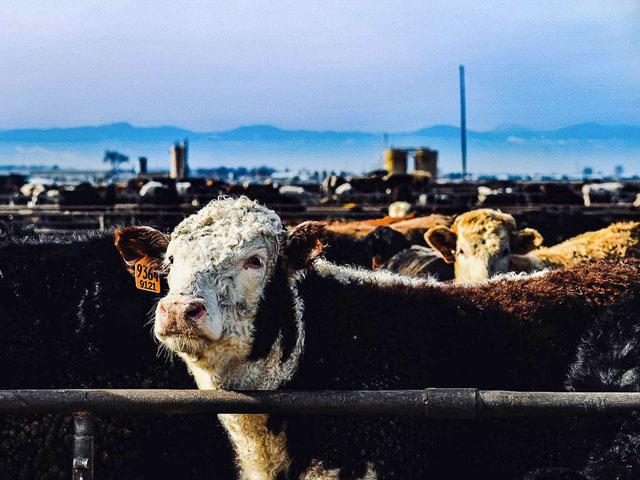Enviros: Montana CAFO Monitoring Lacks
Environmental Groups Allege Montana CAFO General Permit Lacks Pollution Monitoring
LINCOLN, Neb. (DTN) -- Montana's general permit for concentrated animal feeding operations, or CAFOs, does not require monitoring necessary to limit pollution runoff from those facilities, environmental groups alleged in a new lawsuit.
Food and Water Watch and the Center for Food Safety said in a complaint filed on Dec. 15 in Gallatin County District Court in Montana that the Montana Department of Environmental Quality's (DEQ) revised CAFO general permit violates the Clean Water Act by not requiring tracking and measuring of water pollution from the facilities.
As of July 2023, there were 116 CAFOs covered by the general permit, according to the lawsuit.
The groups asked the court to declare the permit violates the Clean Water Act and the Montana Water Quality Act by not requiring discharge monitoring and send it back to the state agency for reconsideration.
The state's general permit does set pollution limits and management standards for most of the CAFOs in Montana.
In 2021, the U.S. Court of Appeals for the Ninth Circuit ruled water pollution permits for CAFOs must include monitoring provisions.
P[L1] D[0x0] M[300x250] OOP[F] ADUNIT[] T[]
"Permittees self-monitoring their pollution discharges and reporting monitoring results is how the Clean Water Act facilitates DEQ or public enforcement of a Montana Pollution Discharge Elimination System (MPDES) permit against facilities that fail to comply with permit terms," the lawsuit said.
"Without monitoring, the permit's effluent limitations are rendered unenforceable. By omitting provisions requiring CAFOs to conduct representative monitoring, DEQ renders the effluent limitations in the CAFO permit unenforceable and leaves Montana's waters vulnerable to unchecked pollution."
The lawsuit said the state chose not to include a monitoring provision in the general permit even after public comments expressed concern.
"In response to comments, DEQ added limited, visual-only inspection conditions at land-application areas when a CAFO operator determines an area poses a uniquely high risk of nutrient run off," the lawsuit said, "but declined to include effluent sampling or water quality monitoring even when a visual inspection identifies a discharge.
"DEQ otherwise wholly declined to add additional monitoring provisions, despite comments stating that without such monitoring the agency lacks an evidentiary basis to ensure compliance with the permit's effluent limitations, assess exceedances of water quality standards, or determine whether CAFO activities are causing degradation of high-quality waters."
Back in August 2023, the federal EPA rejected petitions from environmental groups seeking more regulation of CAFOs.
Those groups led by Food and Water Watch and the Center for Biological Diversity appealed the decision to the U.S. Court of Appeals for the Ninth Circuit.
In October 2023, agriculture groups intervened in the case. Those groups include National Pork Producers Council, American Farm Bureau Federation, U.S. Poultry and Egg Association and United Egg Producers.
EPA said it would form a federal advisory committee to study CAFOs sometime in 2024. That process is expected to last 12 to 18 months.
The 2022 petition filed by numerous state-level clean water advocacy groups as well as Friends of the Earth, Earthjustice, Humane Society of the United States and others, asked the EPA to adopt a presumption that large CAFOs using wet manure management systems discharge pollutants.
A 2017 petition asked the EPA to change CAFO regulations to assume several things.
That includes CAFOs with certain production-area characteristics do actually discharge; that regulations should assume CAFOs applying manure to land as fertilizer actually discharge; to revise EPA interpretation of the agricultural stormwater exemption to clarify that it does not include any CAFO-related discharges, among other requests.
Todd Neeley can be reached at todd.neeley@dtn.com
Follow him on X, formerly known as Twitter, @DTNeeley
(c) Copyright 2023 DTN, LLC. All rights reserved.






